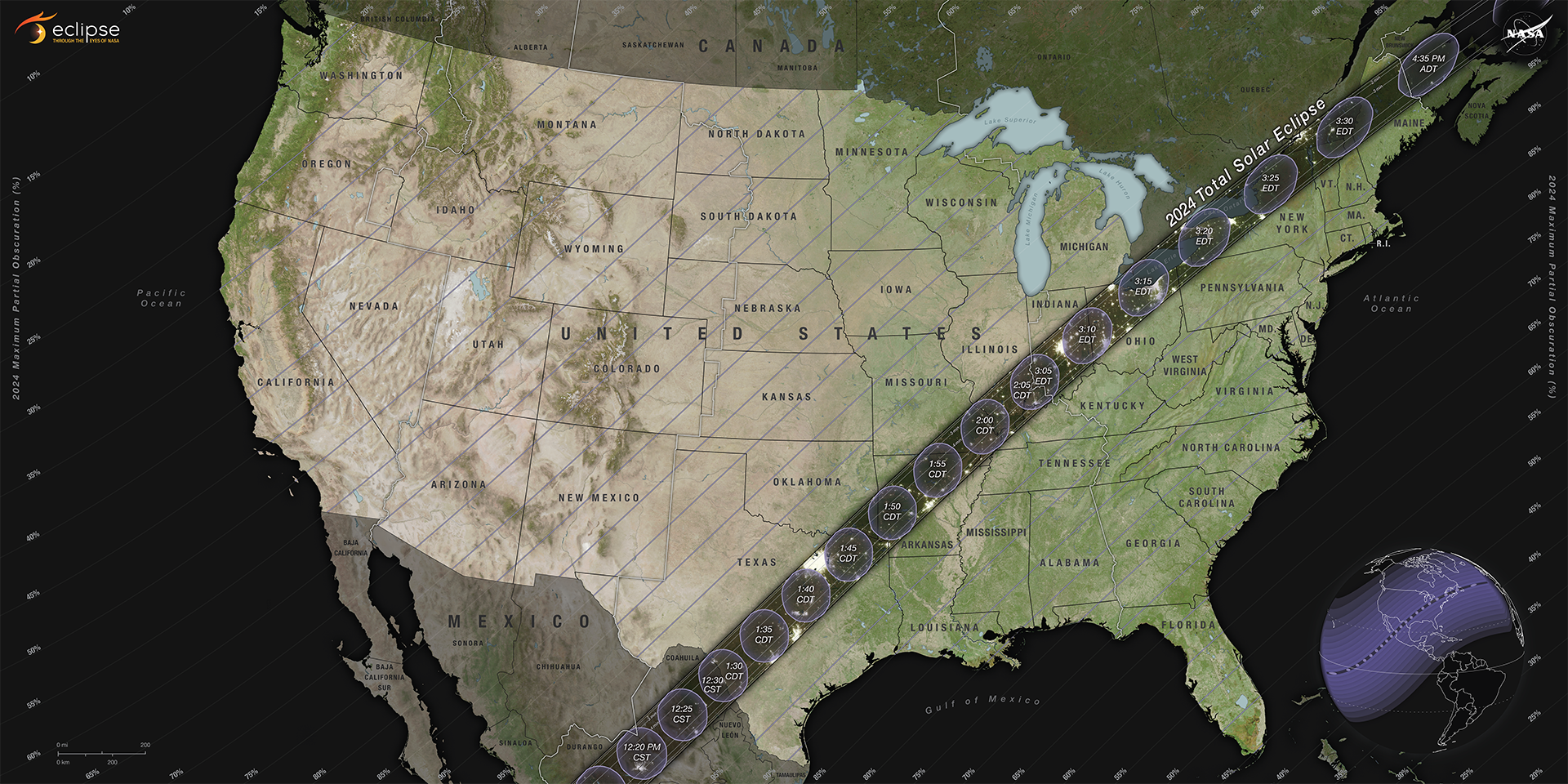What is a total solar eclipse?
A total solar eclipse occurs when the moon passes directly between the Earth and the sun, blocking out the sun's entire disk and casting a shadow on Earth. During a total solar eclipse, the sky darkens significantly, and the sun's outer atmosphere, called the corona, becomes visible as a bright halo around the darkened moon. Total solar eclipses are rare events that can only be seen from a small area on Earth, as the shadow of the moon is relatively narrow. Viewing a total solar eclipse is a unique and awe-inspiring experience, as the sun is completely obscured, revealing the sun's corona and creating a temporary twilight-like atmosphere on Earth.
What makes the 2024 solar eclipse so special?
Path of Totality: The path of totality, where the sun is completely blocked by the moon, will cross over North America, including parts of Mexico, the United States, and Canada. This will allow for a large population to witness the total eclipse.
Duration: The total eclipse is expected to last over 4 minutes in some locations, which is relatively long compared to other total solar eclipses.
Accessibility: Many major cities, such as Dallas, Indianapolis, and Buffalo, are located within the path of totality, making it easier for people to travel to see the eclipse.
Scientific Interest: Total solar eclipses provide valuable opportunities for scientists to study the sun's corona, solar flares, and other phenomena that are usually not visible due to the sun's brightness.
Rarity: The solar eclipse happening on April 8th will be the last total solar eclipse visible from the contiguous United States until 2044.
Photo Credit: NASA's Scientific Visualization Studio
How to protect your eyes during the total solar eclipse
At Delta Dental of Kentucky, we prioritize your overall health, including your eyes and vision. That's why we want to make sure you can safely view the solar eclipse. Protecting your eyes during this natural phenomenon is crucial, and we're here to help you enjoy this rare event while safeguarding your vision for the future.
- Observe the Sun through eclipse glasses or a handheld solar viewer during the partial eclipse phases before and after totality.
- Direct viewing without proper eye protection is safe only when the Moon completely covers the Sun's bright face, known as totality. You'll know it's safe when no part of the Sun is visible through eclipse glasses or a solar viewer.
- Once even a small portion of the bright Sun reappears after totality, promptly resume using your eclipse glasses or a handheld solar viewer to view the Sun.
Children and eye safety
Learn how to protect children's eyes during solar eclipses with these educational strategies and supervision tips.
Risks of using sunglasses
Regular sunglasses are not safe for viewing solar eclipses. Discover what you should use instead to protect your eyes during these events.


